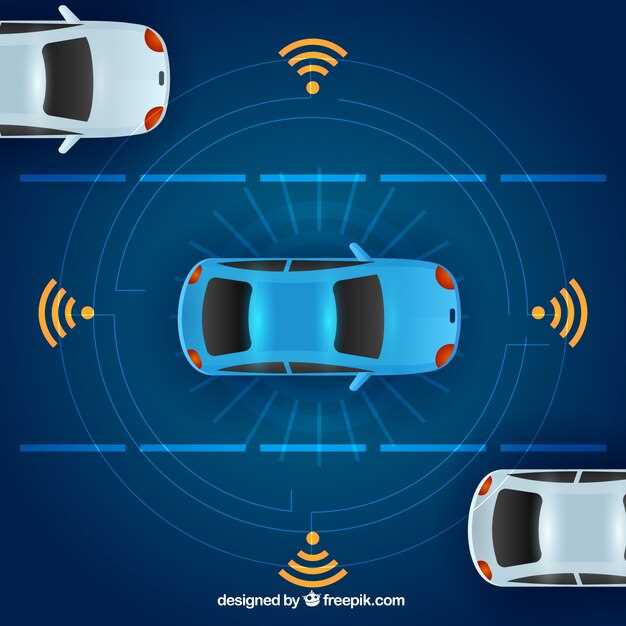
Sensors Every Track Car Should Have
- George Harris
- 0
- Posted on

When it comes to maximizing performance on the racetrack, the integration of advanced technology is crucial. One of the most significant advancements in motorsport is the use of specialized sensors. These devices provide real-time data that can make the difference between victory and defeat. Understanding which sensors to incorporate into your track car is essential for any serious racer.
Data acquisition systems are the backbone of any high-performance track car. These systems collect vital information about various aspects of the vehicle, including speed, acceleration, and tire temperatures. By analyzing this data, drivers and engineers can make informed decisions regarding setup and driving strategies. Accurate data is invaluable for optimizing lap times and improving overall car performance.
Furthermore, temperature sensors are critical for monitoring engine and transmission heat. Overheating can lead to catastrophic failures during a race, so keeping a close eye on these temperatures is necessary for any competitive vehicle. With the right sensors, drivers can avoid potential failures and maintain consistent performance throughout the race.
Additionally, wheel speed sensors play a pivotal role in understanding traction and grip levels. These sensors provide insights into how each wheel is performing, allowing teams to make real-time adjustments for better handling. Comprehensive data from wheel speed sensors helps to enhance cornering stability, which is vital in high-speed racing scenarios.
Incorporating essential sensors into your track car is not just about gathering data; it’s about leveraging that information to create a winning strategy. By investing in the right technology, racers can improve their performance, enhance safety, and gain a competitive edge on the track.
Why Temperature Sensors are Crucial for Engine Performance

Temperature sensors are essential components in the performance monitoring of track cars, as they provide real-time data on critical engine temperatures. These sensors measure the temperature of various engine parts, such as the coolant, oil, and intake air, ensuring that the engine operates within its optimal temperature range.
Maintaining the correct temperature is vital for engine longevity and overall performance. Overheating can lead to severe damage, including warped cylinder heads and blown gaskets. By utilizing temperature sensors, drivers can receive early warnings about potential overheating issues, allowing them to take corrective actions before significant damage occurs.
Moreover, temperature sensors play a crucial role in optimizing engine tuning. Different performance modifications can alter the thermal dynamics of an engine. Monitoring temperatures helps car owners determine the effectiveness of upgrades such as intercoolers, exhaust systems, and engine tuning adjustments. This information allows for fine-tuning that maximizes horsepower and torque while ensuring reliability.
In addition, temperature sensors aid in fuel efficiency. An engine running at ideal temperatures can achieve better combustion, resulting in improved fuel economy. Conversely, when temperatures deviate from optimal levels, fuel consumption can rise dramatically, leading to unnecessary expenses on the track.
Lastly, advanced temperature sensors can provide data analytics through telemetry systems that monitor engine performance in real-time during races. This information can be invaluable for pit crew decisions, enabling timely adjustments to strategy based on current engine conditions. In conclusion, the integration of temperature sensors is vital for maximizing engine performance, ensuring longevity, and providing competitive advantages on the track.
How to Choose the Right Tire Pressure Monitoring System for Racing

When selecting a Tire Pressure Monitoring System (TPMS) for racing, several key factors must be considered to ensure optimal performance and safety on the track. Accuracy is paramount; the chosen system should provide real-time data on tire pressures to the driver, allowing for immediate adjustments as conditions change during a race.
Next, consider the type of sensors used in the TPMS. There are two primary types: direct and indirect sensors. Direct sensors measure the actual tire pressure at the source and provide precise readings, while indirect sensors estimate tire pressure based on wheel speed and other data. For racing purposes, direct sensors are generally preferred due to their accuracy and reliability under high-speed conditions.
Compatibility with your car is another crucial aspect. Ensure that the TPMS can be easily integrated with your vehicle’s existing systems or aftermarket solutions. This includes verifying that it can communicate with your car’s onboard computer or telemetry system, if applicable.
Durability is also essential for racing environments. The system should withstand extreme temperatures, vibrations, and potential impacts. Look for TPMS solutions that are specifically designed for motorsport applications, which often feature reinforced housings and high-quality materials to handle the rigors of track use.
Data display options matter significantly. A good TPMS should provide clear and concise visual feedback, whether through a dedicated display unit or integration with an existing dashboard. Options for data logging can also be beneficial for assessing tire performance over time and making future improvements.
Finally, consider the ease of use and setup. A TPMS that is straightforward to install and calibrate will save valuable time in the pits, allowing you to focus on performance rather than troubleshooting. Look for systems that offer user-friendly interfaces and quick setup procedures to minimize complications.
By prioritizing accuracy, sensor type, vehicle compatibility, durability, display options, and ease of use, you can select an effective Tire Pressure Monitoring System that enhances your racing experience and helps maintain optimal tire performance.
Benefits of Using Data Logging Sensors for Track Performance Analysis
Data logging sensors play a pivotal role in enhancing track performance by providing in-depth insights into vehicle dynamics and driver behavior. These sensors systematically record a wide array of parameters, enabling detailed analysis that informs decisions on optimization and setup adjustments.
Firstly, data logging sensors capture real-time information about critical factors such as lap times, acceleration, braking patterns, and cornering forces. This data allows drivers and teams to identify strengths and weaknesses in performance, facilitating targeted improvements during practice sessions and races.
Moreover, the detailed data gathered over multiple sessions enables trend analysis. Teams can examine how changes to the car setup, tire choices, or driving techniques influence performance. This iterative process of testing and analysis drives continuous improvement, allowing for more precise tuning that ultimately leads to quicker lap times.
In addition, data logging empowers teams to simulate various track conditions and vehicle behaviors. By analyzing historical data, teams can anticipate how their car will perform under different circumstances, equipping drivers with strategies to adapt to rapidly changing track conditions during race day.
Furthermore, these sensors enhance driver coaching by providing quantifiable feedback. Coaches can utilize data to evaluate drivers’ performances, pinpointing areas for improvement and reinforcing effective habits. This objective assessment fosters skill development, leading to enhanced driver confidence and results.
Lastly, data logging contributes to safety enhancements by monitoring vehicle parameters such as tire temperature, fluid levels, and engine performance. Early detection of potential issues allows teams to make preemptive adjustments, reducing the risk of mechanical failures and improving overall safety on the track.
In summary, integrating data logging sensors into track performance analysis offers significant advantages, including detailed insights into vehicle performance, trend analysis for consistent improvement, strategic race preparation, effective driver coaching, and enhanced safety measures. Utilizing these sensors effectively can result in a competitive edge on the racetrack.
